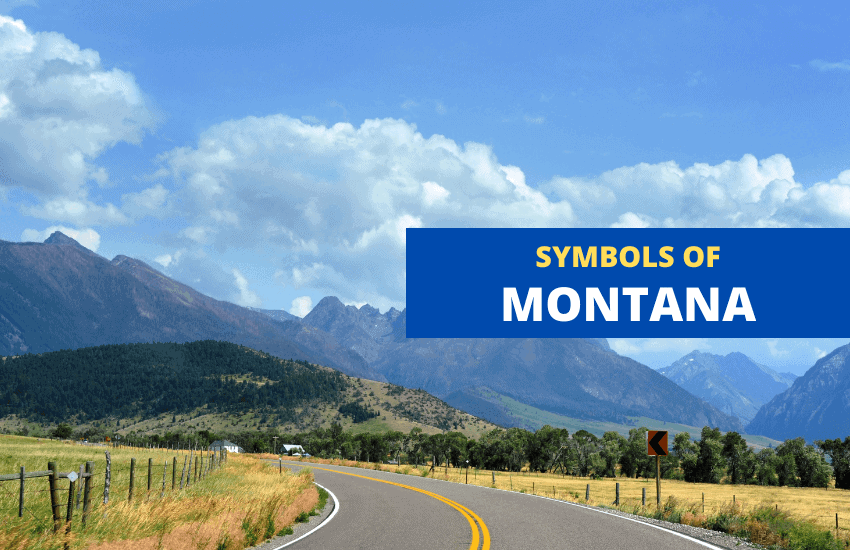
Table of Contents
Montana, the 41st state of the U.S., is known to be the home of the largest migratory elk herd in the country and is one of the few places in the world where you can see free-roaming buffalo. It has a larger variety of wildlife than any other U.S. state with bears, coyotes, antelope, moose, foxes, and many more.
One of the largest states by area, Montana is rich in minerals such as lead, gold, copper, silver, oil, and coal which gave it its nickname ‘The Treasure State’.
Montana was a U.S. Territory for 25 years before it finally joined the Union in 1889. Montana has several official symbols adopted by the General Assembly and the State Legislature. Here’s a look at some of the most important Montana symbols.
The Flag of Montana
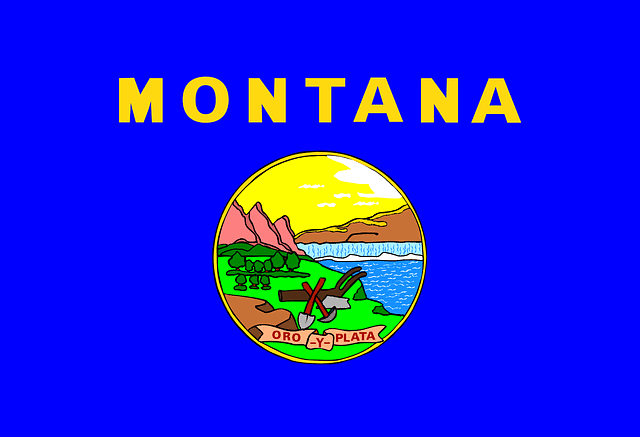
The flag of Montana displays the state seal on a dark blue background with the state name featured in gold letters above the seal.
The original flag was a hand-made banner that was carried by the Montana troops who volunteered in the Spanish-American war. However, its design wasn’t adopted as the official flag of the state until 1904.
The Montana flag is simple in design and contains important elements of the state. However, it ranked third from the bottom by the North American Vexillological Association, stating that the seal on the blue background made it extremely difficult to distinguish.
State Seal of Montana
The official seal of Montana features a setting sun over the snowy mountains, the Missouri River waterfalls and a pick, shovel and plow which are symbols of the state’s farming and mining industry. At the bottom of the seal is the state motto: ‘Oro y Plata’ which means ‘gold and silver’ in Spanish. It refers to the mineral wealth that inspired the state’s nickname ‘the Treasure State’.
On the outer edge of the circular seal are the words ‘THE GREAT SEAL OF THE STATE OF MONTANA’. The seal was adopted in 1865, when Montana was still a U.S. Territory. After achieving statehood, several proposals were made to change it or to adopt a new seal but none of these passed the legislation.
State Tree: Ponderosa Pine
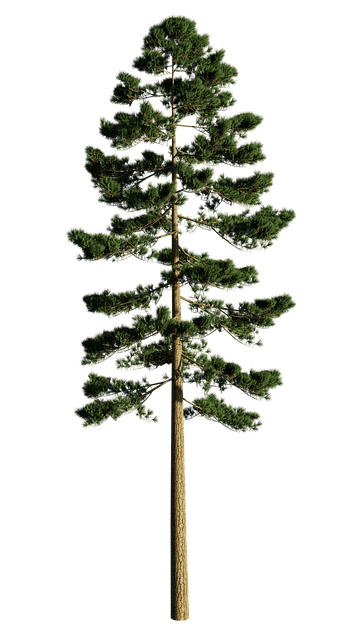
The ponderosa pine, known by many names such as the blackjack pine, filipinus pine or western yellow pine, is a large species of coniferous pine native to the mountainous regions of North America.
In mature ponderosa pine trees, the bark is yellow to orange-red with broad plates and black crevices. The wood of the ponderosa is used for making boxes, cabinets, built-in cases, interior woodwork, sashes and doors and some people collect the pine nuts and eat them either raw or cooked.
In 1908, the schoolchildren of Montana chose the ponderosa pine as the state tree but it wasn’t officially adopted until 1949.
Montana State Quarter
Released in January 2007 as the 41st coin in the U.S. 50 State Quarter Program, the commemorative state quarter of Montana features the skull of a bison and an image of the landscape. The bison is an important symbol of the state, seen on many businesses, license plates and schools and its skull is a reminder of the rich heritage of the Native American tribes. Tribes like the Northern Cheyenne and the Crow once lived on the land that we now know as Montana and much of their clothing, shelter and food came from the large herds of bison that roamed the area. The obverse of the state quarter features the image of George Washington.
State Gemstone: Sapphire
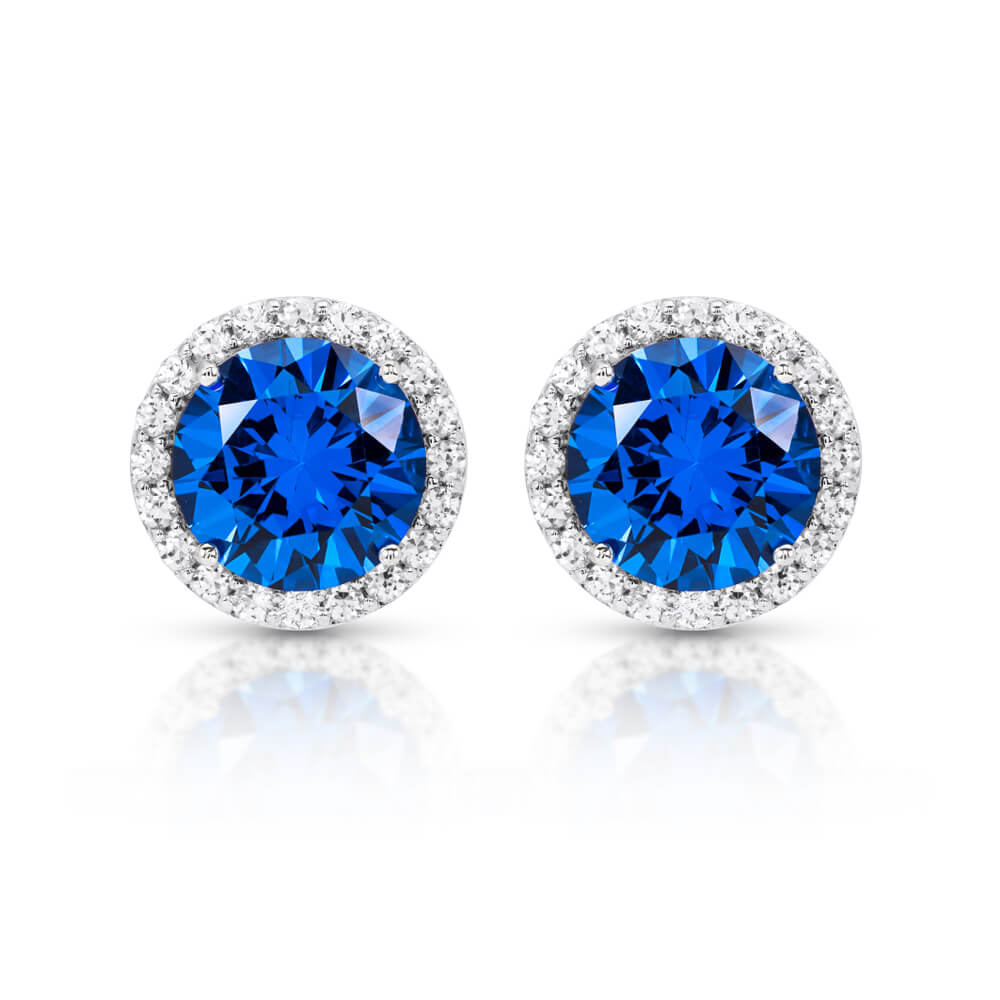
A sapphire is a precious gem made of aluminum oxide and trace amounts of several minerals including titanium, chromium, iron and vanadium. Sapphires are typically blue but they also occur in purple, yellow, orange and green colors, among others. Montana’s sapphires are mostly found in the western region of the state and look just like bright blue glass, used for making jewelry.
In the gold rush days, sapphires were thrown away by miners but now, they’re the most valuable gemstones found in U.S.A. The Montana sapphires are extremely valuable and unique, and can even be found in the Crown Jewels of England. In 1969, the sapphire was designated as the official state gemstone of Montana.
State Flower: Bitterroot
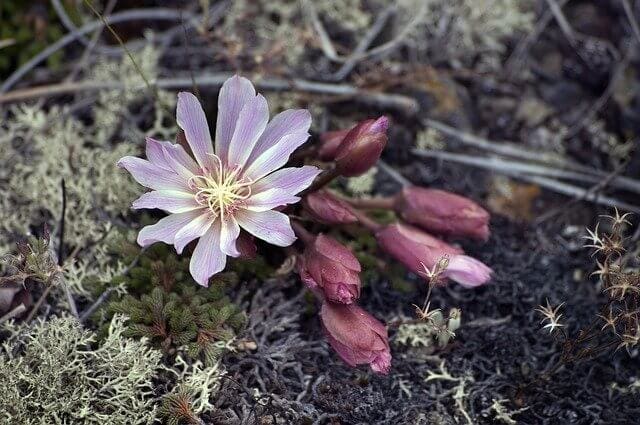
The bitterroot is a perennial herb native to North America, growing in the forested areas, on grassland and open bushland. It has a fleshy taproot and flowers with oval-shaped sepals, ranging from a whitish to deep lavender or pink color.
The Native Americans such as the Flathead and Shoshone Indians used the roots of the bitterroot plant for trade and food. They cooked it and mixed it with meat or berries. The Shoshone people believed that it had special powers and the ability to stop bear attacks. In 1895, the bitterroot flower was adopted as the official state flower of Montana.
State Song: Montana Melody
Montana Melody is the state ballad of Montana, adopted in 1983. Written and performed by LeGrande Harvey, the ballad became a hit throughout the state. Harvey stated that he wrote the song 2 years back during the time he lived in the mountains in western Missoula. He began to perform it locally and a 5th grade teacher in Helena, the capital city of Montana, heard the song. She and her students convinced the state representative to introduce the song to the state legislature, which he did. Harvey was asked to perform the song officially a number of times and it was finally named the state song.
Garnet Ghost Town Montana
Garnet is a famous ghost town located on the Garnet Range Road in Granite County, Montana. It’s a mining town that was established back in the 1890s, as a commercial and residential center for an extensively mined area from 1870-1920. The town was previously named Mitchell and had only 10 buildings. Later on, its name was changed to Garnet. It became a rich, gold-mining area with a population of 1,000 people.
When the gold ran out 20 years later, the town was abandoned. To make matters worse, a fire destroyed half of it in 1912. It was never rebuilt. Today Garnet is the best-preserved town in the state of Montana, with over 16,000 people visiting it each year.
State Motto: Oro y Plata
The state motto of Montana is ‘Oro y Plata’ which is Spanish for ‘Gold and Silver’, metals which were discovered in the mountains of Montana back in the 1800s. The mountains have yielded large fortunes of these precious metals which is how the state got its nickname ‘The Treasure State’.
The motto was conceived when the people of Montana were deciding on an official seal for the territory and they favored ‘Gold and Silver’ because of the mineral wealth that the state had produced for so long. At the same time there was another suggestion that ‘El Dorado’, which means ‘the place of gold’ would be more appropriate than ‘Gold and Silver’ but both the state houses approved ‘Oro y Plata’ instead.
Since it was more popular, the Territorial Governor Edgerton signed the legislation in 1865 and the motto was included in the state seal.
State Fish: Blackspotted Cutthroat Trout
The blackspotted cutthroat trout is a freshwater fish belonging to the salmon family. It has teeth under its tongue, on the roof and in front of its mouth and grows up to 12 inches in length. The trout can be identified by the small, dark spots on its skin that are clustered towards its tail and it feeds on mainly zooplankton and insects.
Also known as ‘westslope cutthroat trout’ and ‘Yellowstone cutthroat trout’, the blackspotted cutthroat is native to the state of Montana. In 1977, it was named the official state fish.
State Butterfly: Mourning Cloak Butterfly
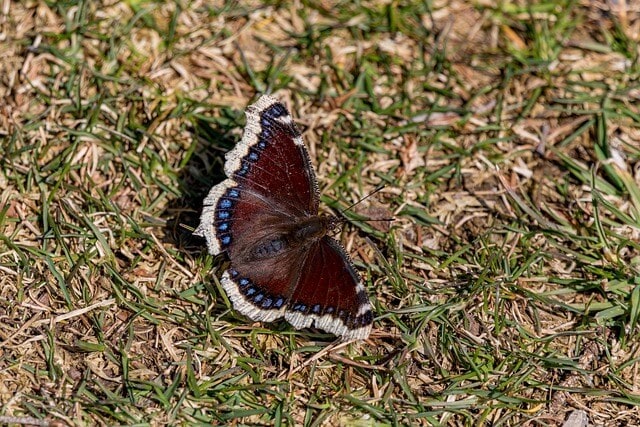
The mourning cloak butterfly is a large species of butterfly with wings that look like a traditional dark cloak worn by those in mourning. These butterflies are usually the first to emerge in the spring, resting on tree trunks and turning their wings toward the sun so that they can absorb heat which helps them fly. They have a life span of about ten months which is the longest of any butterfly.
Mourning cloak butterflies are common in Montana and in 2001, it was designated the official butterfly of the state by the General Assembly.
Montana State Capitol
The State Capitol of Montana is located in Helena, the capital city. It houses the state legislature. It was completed in 1902, constructed of Montana granite and sandstone in the Greek neoclassical architectural style. It has several notable features including the massive dome with the Lady Liberty statue on top of it, and it contains numerous pieces of art, the most significant being the 1912 painting by Charles M. Russell called ‘Lewis and Clark Meeting the Flathead Indians at Ross’ Hole’. The building is now listed on the National Register of Historic Places. It’s open to the public and thousands of people visit it each year.
Check out our related articles on other popular state symbols:








